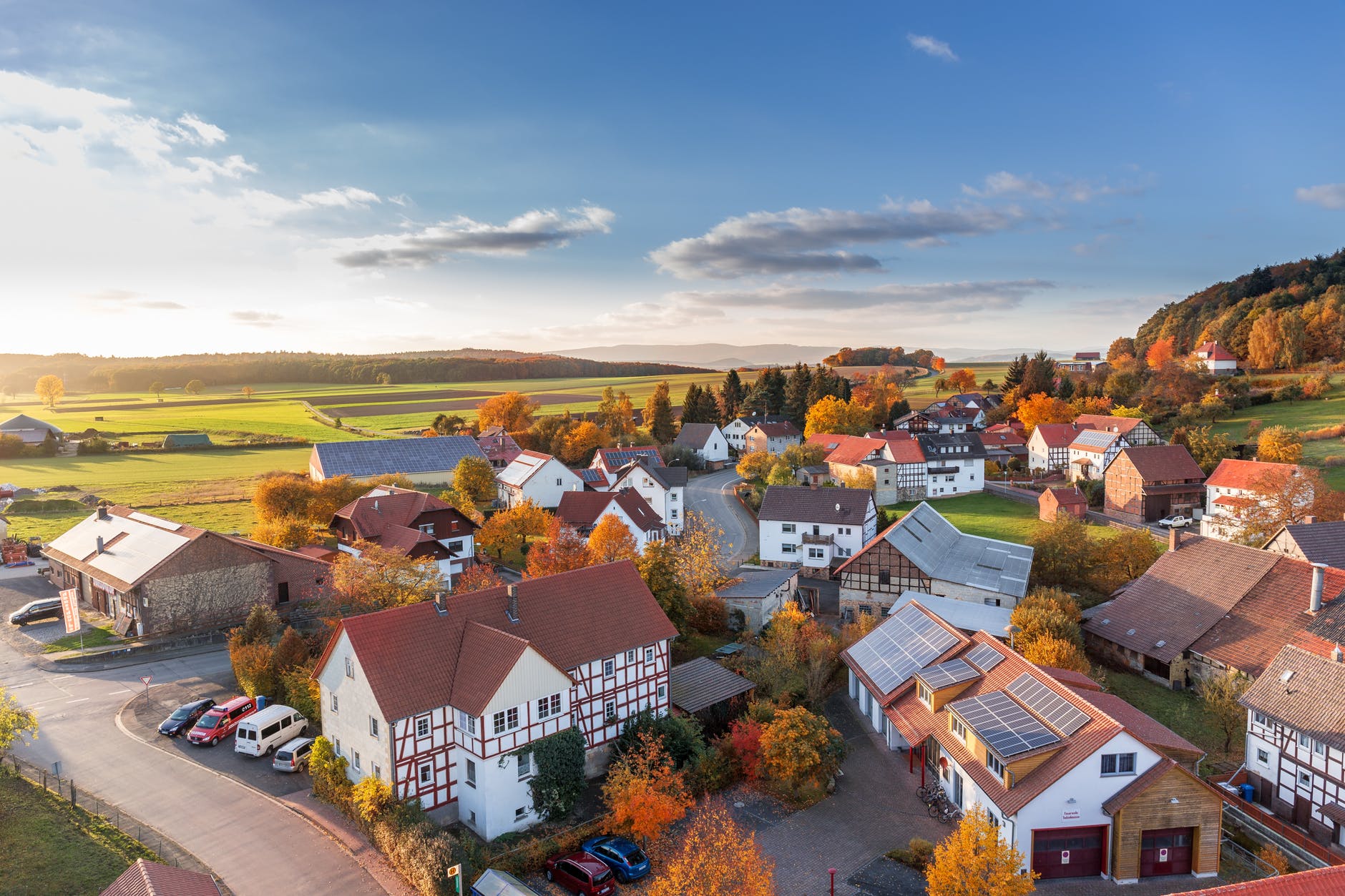
Photo by Pixabay on Pexels.com
The UK population is ageing. A 2019 report from AgeUK using data from the ONS highlighted that there are nearly 12 million (11,989,322) people aged 65 and above in the UK of which: 5.4 million people are aged 75+, 1.6 million are aged 85+, over 500,000 people are 90+ (579,776) and 14,430 are centenarians. By 2030, one in five people in the UK (21.8%) will be aged 65 or over, 6.8% will be aged 75+ and 3.2% will be aged 85+.
Allowing people to live well in old age in their own homes is something which housebuilders and planners are giving increasing thought to, both from a wellbeing perspective for residents, and a financial perspective for services, including the NHS and social care. The creation of “lifetime neighbourhoods” – spaces where people can live well from birth to retirement – brings together a number of elements: providing easy access to services; creating physical spaces which are suitable for people with disabilities and mobility issues to navigate; and allowing people to maintain those social and community ties which are associated with wellbeing, which can sometimes be lost with forced moves to residential care or a prolonged stay in hospital.
Homes for life
Building homes that are suitable for an ageing population is an important first step in creating lifetime neighbourhoods. However, planners and developers are starting to realise that one size doesn’t necessarily fit all when it comes to housing for older people. As with the general population, older people are not a homogenous group, and while some may need the support provided by extra care or sheltered housing projects, or may need single-storey open plan living to accommodate mobility aids or telecare packages, others simply want to live in a space which enables them to live comfortably in a community which suits their needs in terms of location and availability of services.
Designing and building a range of different housing types, which includes single-storey homes, extra care and sheltered housing, as well as stock which is suitable for people looking to downsize, is a key part of the development of effective lifetime neighbourhoods. This can free up larger family homes for people with children to move into and ensure that people are not kept unnecessarily in hospital because housing cannot be adapted to meet changing needs. A 2014 Age UK report showed that the scarcity of suitable and affordable retirement housing is a barrier to downsizing, highlighting that retirement housing makes up just 5-6% of all older people’s housing. Now groups like the Housing Made for Everyone coalition (HoME) are calling on the government to make all new homes accessible and adaptable as standard to help meet growing need in the future.
Social infrastructure such as libraries, community centres, local shops and good transport links are also a key aspect to planning effective lifetime neighbourhoods, as is ensuring accessibility of services such as GP appointments. Effective infrastructure planning can help enable the whole community, not just older people to feel connected to their local area, both physically and socially which can really help to support the idea of lifetime neighbourhoods and enable people to live well regardless of age.
Preventing loneliness and isolation in older age
Preventing loneliness and isolation in old age by creating spaces which facilitate engagement and encourage people to have positive social interactions is important to ensure that everyone within the community feels respected, involved and appreciated. However, the challenges are different depending on the nature of the community in question. In rural areas, social isolation can be compounded by a lack of appropriate transport infrastructure or the removal of key services at a local level in favour of “hubs” which are often located in towns and cities; in urban areas, loneliness can be exacerbated by the chaotic, hostile or intimidating environment that living in a densely populated area can have, a flip side to the benefits of density.
Ambition for ageing is a programme which aims to discover what works in reducing social isolation by taking an asset based approach to creating age friendly communities. Asset based approaches seek to identify the strengths and the abilities of people and communities, rather than their deficits. The asset based approach to creating age friendly neighbourhoods also seeks to use the experiences and attributes that all members of the community have to help make the community better. To create effective age friendly neighbourhoods older people need to have opportunities to participate and feel that they are making a positive contribution.
A space for all ages
While much of the research and literature on lifetime neighbourhoods focuses on older people, it is also important to ensure that spaces meet the needs of all groups in the community, including children and young people and people with disabilities. Creating places which balance the needs of all groups within the community is an important consideration for planners.
The physical environment can be as important as the built environment and infrastructure development when it comes to developing lifetime neighbourhoods. Spaces which make use of natural and green infrastructure with lots of green and open public spaces have been shown to help improve mental health and wellbeing, as well as encouraging people of all ages to be more active. A number of design factors such as good paving, effective street lighting and easy access to seating and public toilets make neighbourhoods accessible to older people and people with impairments. Poor design can ‘disable’ people in their immediate environment and act as a barrier to participation in local activities.

Photo by Pixabay on Pexels.com
Final thoughts
For lifetime neighbourhoods to be successful, it is necessary that there is access to a range of appropriate housing options. In addition, the planning of public, open and green spaces, availability of transport links and local community infrastructure like libraries, police stations and local shops are all vitally important to ensure communities can thrive.
It is clear that while there is demand for more suitable housing for people in older age, the location and type of housing being built must also meet the needs and expectations of older residents, including good connections to local infrastructure, and safe accommodation. Projects which bring a range of ages together can be effective in strengthening community cohesion, can help challenge stereotypes and can reduce feelings of loneliness and isolation. Collectively these different elements feed into the creation of lifetime neighbourhoods which can support people to live well into retirement and beyond.
Further reading: more articles from our blog
- ‘Digital prescribing’ – could tech provide the solution to loneliness in older people?
- Helping people to reconnect: positive projects for people with dementia
- Is technology really the answer to social isolation and loneliness?
Follow us on Twitter to see what topics are interesting our research team.
Share
Related Posts
Supporting residents on the decarbonisation journey: leveraging data for effective retrofit projects
As the drive towards decarbonisation intensifies, the social housing sector’s ability to collect, store and manage vast amounts of data becomes increasingly critical. With a shared goal of creating warmer, carbon-free homes, housing associations’ strategic use of data is essential ....
The recent spikes in energy costs have thrown into sharp focus the challenge of heating our homes. Domestic heating is important, not just for our comfort and wellbeing, but to reduce humidity and prevent condensation. But because traditional heating systems ....
Tackling geographical inequalities is critical for ensuring that all parts of the country have the potential to prosper. When the UK was a member of the European Union, it was entitled to a share of funding from the EU’s structural ....

